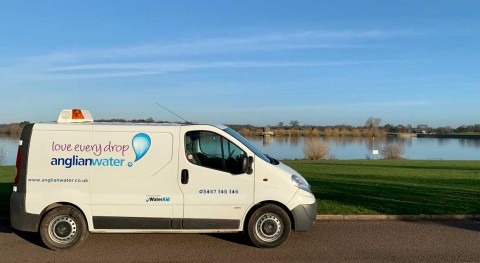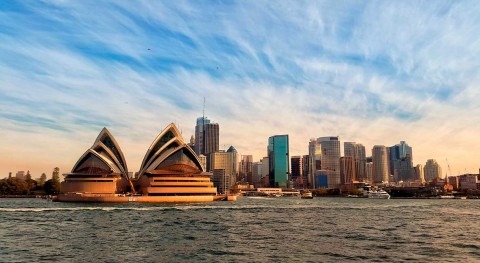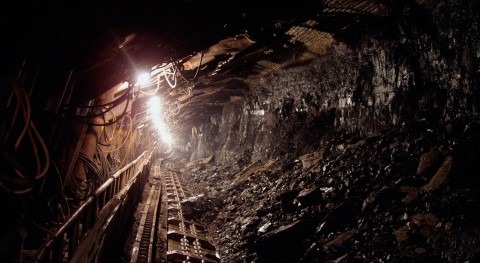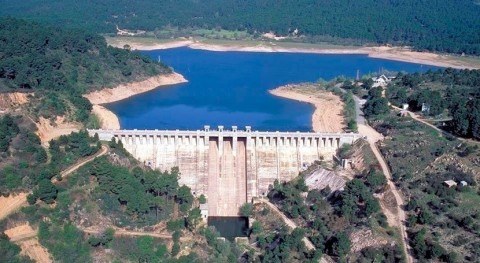On 16 December, the Water Services Regulation Authority (Ofwat), the economic regulator for water companies in England and Wales, will publish its final determinations for the five-year period beginning April 2020. The determinations are likely to signal the largest deterioration in the industry's credit quality since the companies were privatised in the late 1980s. We have a negative outlook on 12 of 15 rated operating companies.
- Allowed return likely to be cut again. Draft determinations published in July included the largest-ever cut in allowed returns, and most water companies described the proposals as “unfinanceable”. Even so, Ofwat signalled that returns could fall further, and we believe market movements since July suggest a further 20-basis-point reduction from draft determinations is likely.
- Significant unfunded spending and operational penalties likely. At draft determinations, Ofwat's cost allowances were £1.9 billion less than companies said they needed to fund “base” spending, excluding enhancement projects, and we estimate that companies were on track to incur £1.4 billion of penalties for operational performance. Although this gap may narrow at final determinations, we expect it to remain very large.
- Appeals likely to extend process. Companies responded strongly to the draft determinations, with almost all asserting that the determinations were not “financeable” and many suggesting that they would appeal to the Competition and Markets Authority (CMA) if changes were not forthcoming at final determinations. Companies must decide by 15 February whether to appeal, but the CMA has warned that it may need to extend the usual six-month deadline for resolving appeals. Even if appeals are successful, the final determination will still apply until March 2021.
- Companies have no easy options. If final determinations or appeals do not result in significant improvement, the credit quality of many companies is likely to deteriorate. We expect that companies will try to reduce or defer spending and to focus their efforts on avoiding operational penalties, but sharply lower cash flow will make further deleveraging difficult without equity injections. Companies may use derivatives to increase cash flow and avoid distribution lock-ups in the period, weakening the position of senior creditors.
Allowed return likely to be cut again
Ofwat based its slow-track draft determinations, published in July 2019, on an allowed cash return of 2.69%. However, this was based on Ofwat's estimate of the industry's cost of capital as of February 2019, and Ofwat warned that market conditions by June 2019 warranted a lower cash return of 2.31% (we describe this as Ofwat's “look ahead” cost of capital). The further reduction in the cost of capital was based on falling interest rates and lower equity betas, in roughly equal measure.
Since June, bond yields have continued to fall but equity betas have risen (Exhibits 1-2). UK government bond yields and the iBoxx corporate bond index used by Ofwat in its draft determination have decreased by around 70-80 basis points since February and 20-30 basis points since June. And the decrease in equity betas of the publicly-traded water companies, Severn Trent Plc (Baa1 negative) and United Utilities Group Plc (parent company of United Utilities Water Limited, A3 stable), that Ofwat observed between February and June has reversed, with Ofwat's preferred two-year measure returning to around the level used at draft determinations.
If Ofwat continues to use the same methodology for calculating the cost of capital at final determinations, we estimate that it would allow a cash return of around 2.5% at the appointee level, 20 basis points below the draft determinations (Exhibits 3-4).

This is equivalent to around 5.1% on a nominal basis, 2.0% on an RPI-stripped basis (for comparison with previous periods) and 3.0% on a CPI-stripped basis. Our estimated allowed return would represent a cut from the current period of 1.25 percentage points (33%) on a cash basis and 1.8 percentage points (26%) on a nominal basis. This would be unprecedented for a UK regulated sector. Details of our calculations are included in the Appendix.
Although Ofwat is unlikely to make major changes to its approach at final determinations, some adjustments are possible. For example, Ofwat may choose to look at only Baa corporate bond yields, rather than a blend of A and Baa, for debt to be issued during AMP7. This would address a specific criticism of Ofwat's draft determination, that it is inappropriate to assume companies can borrow in line with strong Baa issuers while at the same time allowing an overall return that means a notionally financed company would have weaker credit quality. However, this change would increase the allowed return by only two or three basis points. We regard more significant changes, such as moving to full CPIH indexation, as unlikely, because they were not consulted on at the draft determination.
Significant unfunded spending and operational penalties likely
In its draft determinations, Ofwat's allowance for “base” wholesale and retail spending, excluding enhancement projects, was £1.9 billion less than the amount companies said they needed to spend. Companies may be able to avoid or defer some base spending; in its response to its draft determination, for example, Thames Water Utilities Ltd (Baa1 negative) said it could meet Ofwat's AMP7 cost targets by implementing “short term fixes which are more expensive in the long run” and carry greater operational risk.
Some of the totex differential also relates to differing views around population growth and required environmental spending that are likely to narrow at final determinations. But we believe that most of the gap is the result of efficiency targets that most companies will struggle to reach, and that the industry as a whole is likely to materially overspend cost allowances if they are not increased at final determinations. Although up to half of this overspend would be recovered or added to the regulatory capital value (RCV) in April 2025 under the cost sharing mechanism, it will result in higher gearing and weaker cash flow over the AMP7 period.
In addition, we estimate that companies would incur £1.4 billion of Outcome Delivery Incentive (ODI) penalties for underperformance if they achieved leakage, sewer flooding and other operational measures in line with their business plans. Most of these penalties would affect revenue during the AMP7 period, although penalties incurred in 2023-24 and 2024-25 would hit the following period because they are paid with a two-year lag.
Taken together, £3.3 billion of overspend and ODI penalties is equivalent to around 4.5% of the industry's RCV. However, the burden falls very unevenly, with Bristol Water plc (Baa1 negative), South Staffordshire Water Plc (Baa2 negative), Anglian Water Services Ltd (Baa1 negative), Thames Water and Yorkshire Water Services Limited (Baa2 negative) worst affected (Exhibit 5).

Unlike previous price controls, Ofwat has not softened its position as the price review has progressed. The regulator actually reduced its estimate of efficient costs, including both base and enhancement total spending, by £0.2 billion between its initial assessment of plans and draft determinations. This occurred despite companies submitting more evidence and reducing their planned expenditure by £1.4 billion. Similarly, our estimate of ODI penalties for most companies has increased as the price review progressed and Ofwat tightened targets, increased penalty rates or removed caps.
In their responses to the draft determinations, most companies said that the package of spending and ODIs was unrealistic or unachievable. We expect that Ofwat will make some concessions at final determinations, particularly to reduce penalties for certain ODIs that seemed disproportionately large, including mains repairs at Yorkshire Water and unplanned interruptions at Thames Water.
Appeals likely to extend process to late 2020
Companies responded strongly to the draft determinations, with almost all asserting that the determinations were not “financeable” and many suggesting that they would appeal to the Competition and Markets Authority (CMA) if changes were not forthcoming at final determinations.
Ofwat is required under the Water Industry Act to make a “reference” to the CMA if a company asks it to do so on or before 15 February 2020. The same act requires the CMA to reach a decision within six months of receiving a reference, unless it requests a single extension of up to six months and Ofwat is satisfied that there are “special reasons” why the referral cannot be resolved within the original period. In a recent letter sent to companies, the CMA said that it would try to complete its work within the six-month deadline, but that it recognised an extension could be needed (Exhibit 6).

The CMA typically publishes provisional findings for public consultation, although it is not required to do so and chose not to in its review of Ofgem's electricity distribution price determinations in 2015.
In water, a CMA decision takes the form of a full redetermination that can, at least in theory, reconsider any aspect of Ofwat's methodology. However, only companies that participate in the appeal will be affected by any redetermination, even if the CMA disagrees with Ofwat on sectorwide issues like the cost of capital. Even if appeals are successful, the final determination will still apply until March 2021, creating immediate pressure on companies' cash flow and key credit metrics.
There was only a single appeal in each of the 2009 and 2014 price reviews, in both cases from Bristol Water. In a poll conducted at our UK Water and Regulated Networks Conference in October 2019, 81% of attendees said they believed that three or more companies would appeal in PR19.
Companies have no easy options
If final determinations and appeals do not result in a significant increase in companies' cost allowances or a reduction in their expected operational penalties compared with draft determinations, many are likely to face a sharp reduction in their credit quality over AMP7, absent significant measures to bolster their balance sheets. For companies hit by large ODI penalties, this pressure will be most acute after April 2022, when penalties accrued in the earlier years of the period are paid.
We expect that companies will focus efforts on activities that contribute most to ODI performance. They may try to reduce or defer spending, although tough operational incentives will make it difficult to reduce investment significantly without incurring financial penalties and risking reputational damage.
Companies may also try to reduce leverage by restricting dividend payments. However, materially lower cash flow as a result of the lower allowed return and operational underperformance could make this difficult, particularly for companies with high interest costs because of expensive embedded debt or high leverage. Exhibit 7 shows total borrowing costs as a percentage of debt RCV (the debt that a company would have if it were geared in line with the regulator's 60% assumption). This shows that the cost-of-debt element of the allowed return covers only 55%-65% of many companies' borrowing costs.
.jpg)
In response to the cut in returns, we believe that more companies may execute so-called “derivative restructurings” that allow them to report new borrowing as a reduction in financing costs for accounting purposes and to exclude these borrowings from the covenant definition of debt. Doing so can allow companies with highly covenanted financing structures to avoid dividend lock-ups, weakening creditor protections. Because swap liabilities typically rank ahead of senior creditors in the event of default, these restructurings also increase the expected loss for senior creditors.











